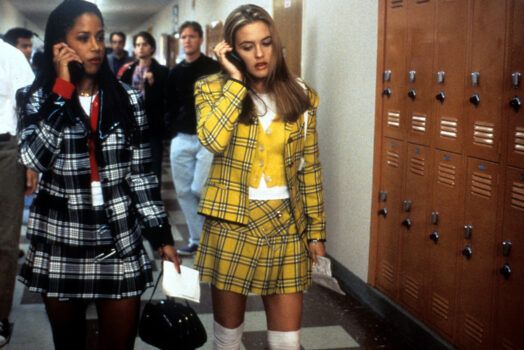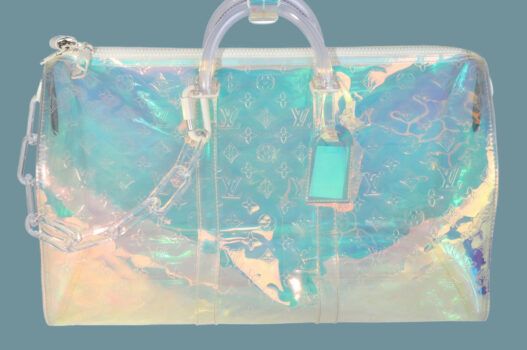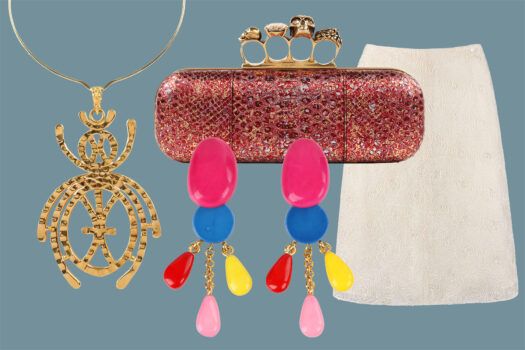What Do You Know About Yohji Yamamoto?
Yohji Yamamoto likes it dirty. But when he began designing in the 1970s, few shared his appreciation of garments that looked worn, distressed — even dark. No matter. He had a vision, and soon enough the rest of the world had an entirely new way to dress. How well do you know this man who scorns perfection, declaring instead that “dirty is good”? Take our 12-question quiz about the avant-garde master tailor who isn’t afraid to get “dirty” with his fashion designs.
1. Yohji Yamamoto has said that by the time he was four years old, he felt he “had to protect his mother.” Why?
A. His father was killed in the line of duty during World War II.
B. He’d heard a vicious shih tzu puppy was attacking attractive young women in his neighborhood.
2. What had Yamamoto accomplished by age 26?
A. Earned a law degree at Keio University
B. Worked for a few years assisting in his mother’s dress shop
C. Earned a fashion degree at Bunka and a prize to travel to Paris
D. All of the above
E. None of the above
3. “Yamamoto is a gambling, smoking, pool table slamming, karate-chopping, whisky-drinking geezer who plays guitar in a folk rock band. And, like all geezers, he loves cars (he has a Rolls-Royce) and women,” wrote Jamie Huckbody in i-D magazine in 2002. But is he a good son?
True or False: Yamamoto broke all contact with his mother in the mid-1980s when she complained he didn’t call often enough from Paris.
A. True
B. False
4. Yamamoto showed his collection for the first time in Paris in 1981. Which Japanese designer debuted alongside him?
A. Rei Kawakubo
B. Issey Miyake
C. Junya Watanabe
D. Kenzo Takada
5. True or False: Yamamoto designs loose, androgynous clothing because he thinks sex appeal is overrated.
A. True
B. False
6. Which of the following designers did Yamamoto learn from?
A. Coco Chanel
B. Madeleine Vionnet
C. Elsa Schiaparelli
D. Madame Grès
E. All of the above
7. Which of the following does NOT inspire Yamamoto’s designs?
A. Dainty, ladylike dresses
B. Military uniforms
C. Androgyny
D. Traditional Japanese dress
E. August Sander‘s photographs of workers
F. Utility wear
8. True or False: Yamamoto prefers sturdy fabric, so he relies exclusively on textiles manufactured for use by the American military.
A. True
B. False
9. “Black is modest and arrogant at the same time,” begins an oft-repeated, though abbreviated, Yamamoto quote. His full statement (which ran in a 2000 interview with critic Suze Menkes) continued for five additional sentences.
Below are six sentences. Which one was NOT in Yamamoto’s original statement?
A. “Black is lazy and easy — but mysterious.”
B. “You can spill wine on black, and nobody will know.”
C. “It means that many things go together, yet it takes different aspects in many fabrics.”
D. “You need black to have a silhouette.”
E. “Black can swallow light, or make things look sharp.”
F. “But above all black says this: ‘I don’t bother you — don’t bother me!’ ”
10. What did Yamamoto’s assistant pull out of her tote for him as she walked down the street with him during a 2014 interview?
A. Metal ashtray
B. A Cartier ballpoint pen
C. Hairspray in a custom canister
11. “Let’s be vagabonds,” Yamamoto has said. What was he talking about?
A. His attitude toward designing for men. He also said, “Let’s be far from our suits and ties.”
B. His promotion of minimal wardrobes that can be taken on the road at short notice
12. True or False: Fashion is Yamamoto’s only creative interest.
A. True
B. False
Answers
- A. His father was killed in the line of duty during World War II. — “It’s fate,” Yohji Yamamoto told the Independent in 2010. “I was born the only son of a war widow, and my anger started from that moment. When I was three years old, four years old, I knew already that life must be very tough. I had to fight. I had to protect my mother.”
- D. All of the above — At 26, Yamamoto was back in Tokyo after nine months in Paris, where he’d failed to sell a single fashion sketch. He began to gain attention when he launched his own line with a collection made up exclusively of raincoats. He presented his first full collection in Tokyo in 1977.
- B. False — Fumi Yamamoto sold her shop to help her son open his business in 1972. According to a February 2011 article in the Telegraph, “she has devoted her life to her son” and for years traveled to the Paris womenswear shows twice annually to support him. She often cooked for him and his team. One favored dish was a special Japanese omelet. She received a salary until his company was restructured in 2009.
- A. Rei Kawakubo — Yamamoto and Kawakubo had been dating since the 1970s. Hopefully, their union helped them weather the fashion establishment’s hostility. Le Figaro declared Yamamoto’s line “The Japanese Offensive!” Others characterized his dark, shapeless designs as “Hiroshima” and “holocaust chic.” Just two years later, however, Carrie Donovan of the New York Times proclaimed that the “Japanese had ‘arrived.’” Still, opinions remained split. “Either the Japanese movement is the most exciting thing to happen to fashion in years,” Donovan wrote, “or it’s an outrage, a travesty of what clothes are supposed to be about.”
- B. False — “The most important thing for both women and men, in terms of dressing, is to look sexy,” Yamamoto once said. But he has his own definition of sex appeal: “For me, a woman who is absorbed in her work, who does not care about gaining one’s favor, strong yet subtle at the same time, is essentially more seductive.” According to the musician Jean-Michel Jarre, Yamamoto’s clothes certainly succeed at seduction. “For me, a woman in Yohji is like a nymphomaniac nun.”
- E. All of the above — Female designers present a special mystery to him, since their work “comes out naturally from their own body,” as he has put it. Nevertheless, he devoted himself to “endless repetition and the study of the classics. After that one may topple the establishment.”
- A. Dainty, ladylike dresses — “I was . . . determined at all costs to avoid creating the cute, doll-like women that some men so adore,” he has said of his reaction to the years spent working in his mother’s shop: “a place overflowing with women whose job it was to titillate male customers.”
- B. False — Although he does prefer textiles with a rough, durable hand, his are custom-made by a family-run manufacturer in Kyoto. The Chiso Factory opened in 1555 to make garments for monks; today, it specializes in ceremonial kimonos that can take up to a year to complete. “When I stick with Japanese craftsmanship for weaving, for sewing, for cutting,” he says, “maybe I’m touching a little bit of culture of the human being.”
- B. “You can spill wine on black, and nobody will know.” — Menkes considers Yamamoto “the poet of black; the director of fashion’s film noir.” It’s easy to understand why.
- A. A metal ashtray — In addition to a smoking habit, Yamamoto has a black belt in Karate.
- A. His attitude toward designing for men. — Because Yamamoto’s male customers are mainly in creative fields, “they can look a little strange and funny.” Which is part of his inspiration. “Designing men’s is quite limited because they have only pants, jackets and shirts, that’s it,” he said in an interview with the Victoria and Albert Museum. “So we have to put some irony or joke or funny message.”
- B. False — “I have started to write and paint,” he said in an interview with i-D in 2015. “I am a phoenix.” He also wants to make films. What kind? “Half fiction, half documentary. Or maybe porn.”
Questions by Lisa Santandrea. Santandrea is a New York City–based writer who teaches fashion history at Parsons School of Design. Background image: Leslie Weiner in Yohji Yamamoto, London, 1989, by Albert Watson




